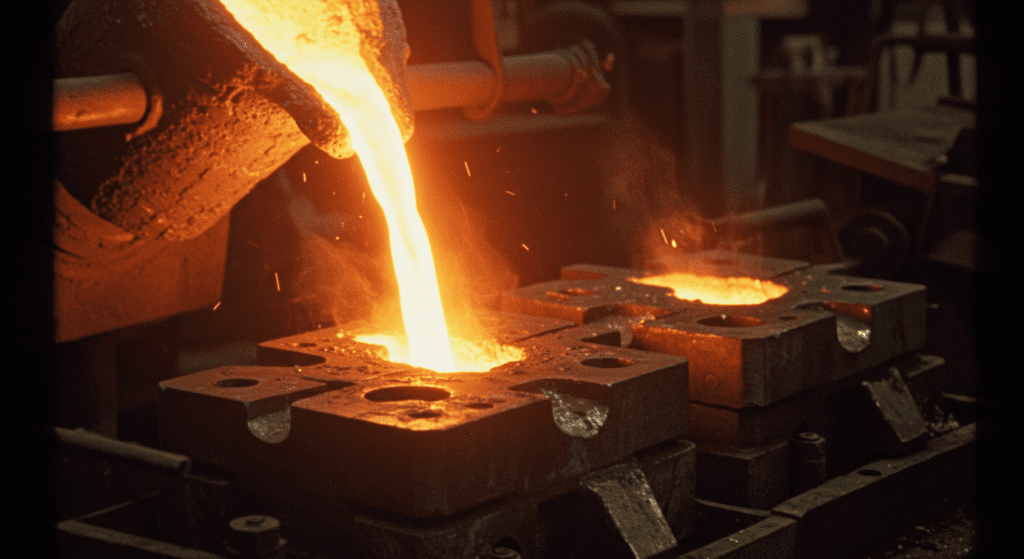Heat flow in metal casting refers to the transfer of thermal energy from molten metal to the mold material. This process controls solidification speed, affects casting quality, and influences grain structure. Efficient heat flow ensures uniform cooling, reduces defects like shrinkage, and improves mechanical properties in the final casting.

Heat flow in metal casting is the movement of thermal energy from hot liquid metal to cooler surroundings during the casting process. This heat transfer happens in three main ways: through direct contact (conduction), through fluid movement (convection), and through electromagnetic waves (radiation).
When you pour molten metal into a mold, it starts at temperatures between 1,200°F to 3,000°F depending on the metal type. The metal must cool down and solidify to form your final part.
During solidification, heat leaves the molten metal through three main methods.
Conduction transfers 90% of the heat in most metal casting processes. It happens when heat moves through direct contact between the metal and mold wall.
The formula for conductive heat flow is:
Q = k × A × (T₁ - T₂) / d
Where:
Sand molds have low thermal conductivity (k = 0.5-1.5 W/m·K). Metal molds have much higher conductivity (k = 50-400 W/m·K).
This is why castings cool 10 times faster in metal molds than in sand molds.
Convection happens when moving fluids carry heat away. In casting, this occurs in two places.
Inside the liquid metal, hot metal rises while cooler metal sinks. This creates currents that help distribute heat more evenly.
Outside the mold, air flowing past the mold surface carries heat away. The convection formula is:
Q = h × A × (T_surface - T_air)
Where h is the convection coefficient (typically 10-100 W/m²·K for air cooling).
Radiation transfers heat through electromagnetic waves. Hot mold surfaces radiate heat to cooler surroundings without needing any contact.
The radiation formula is:
Q = ε × σ × A × (T₁⁴ - T₂⁴)
Where:
Radiation becomes more important at higher temperatures. At 1,800°F, radiation can account for 20% of total heat loss.
When metal changes from liquid to solid, it releases latent heat of fusion. This energy release slows down the cooling process at the freezing point.
The total heat to remove equals:
Q_total = m × [c_liquid × (T_pour - T_solidification) + L + c_solid × (T_solidification - T_final)]
This latent heat creates a plateau in the cooling curve. The metal stays at its freezing temperature until all latent heat is removed.
Learn more about Heat Transfer Calculator
How heat flows through your casting determines whether you get a good part or a defective one. Let’s examine the main problems caused by improper heat flow.
Metal shrinks about 3-7% when it solidifies. If fresh liquid metal can’t flow in to fill this space, you get shrinkage porosity.
Hot tears form when solidifying metal can’t contract freely due to mold restraint. They appear as jagged cracks on the casting surface.
These cracks happen at 85-95% solid fraction when the metal has no strength. Temperature differences of 50°C across a section can cause hot tearing.
Misruns happen when metal solidifies before filling the entire mold cavity. The metal loses too much heat and stops flowing.
Cold shuts occur when two metal streams meet but don’t fuse properly. The surfaces have cooled too much to bond together.
Both defects result from excessive heat loss during pouring.
Gas porosity creates round bubbles in your casting. While not directly caused by heat flow, temperature changes affect gas solubility in metal.
Liquid metal can hold more dissolved gas than solid metal. As metal cools and solidifies, excess gas forms bubbles.
